Mucinous Adenocarcinoma of Stomach
Clinical History: An 84-year-old male patient, known case of HTN and dyslipidemia, complaining of dysphasia for three months. Anorexia and vomiting. Diagnosed as esophageal adenocarcinoma outside for evaluation.
Clinical History: An 84-year-old male patient, known case of HTN and dyslipidemia, complaining of dysphasia for three months. Anorexia and vomiting. Diagnosed as esophageal adenocarcinoma outside for evaluation.
A CT scan of chest with IV contrast and CT of the abdomen and pelvis done with IV and oral negative contrast.

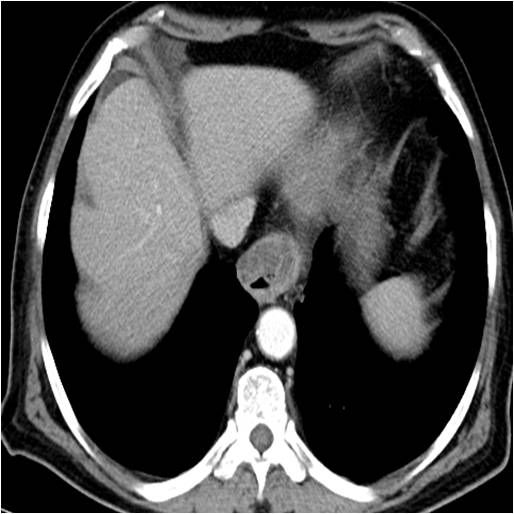
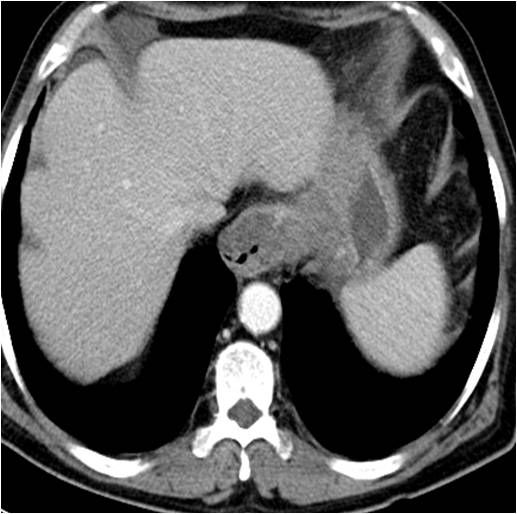
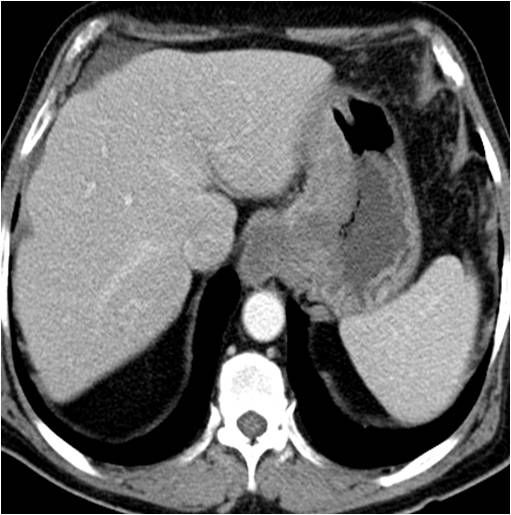
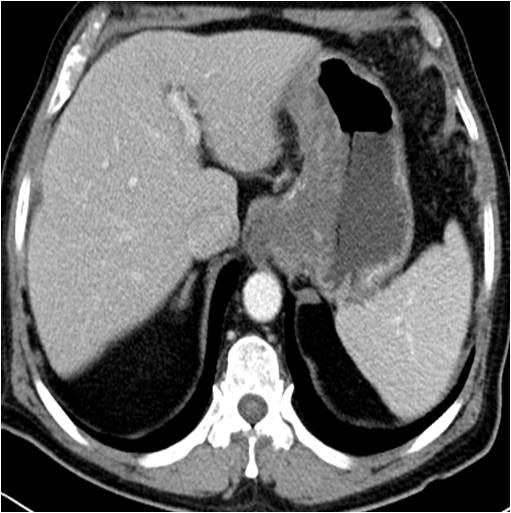
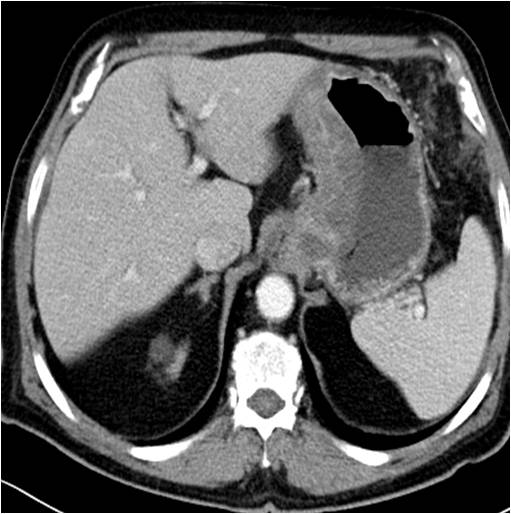
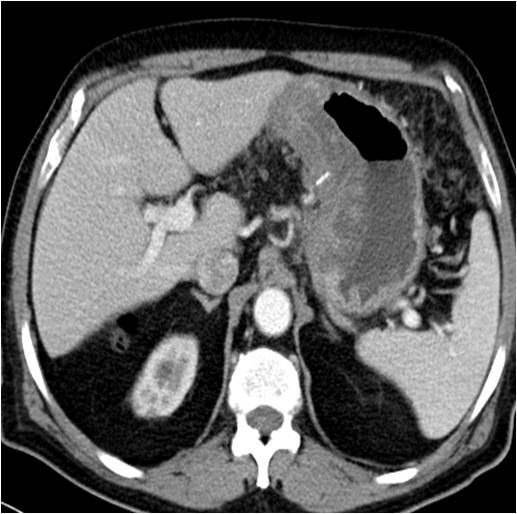
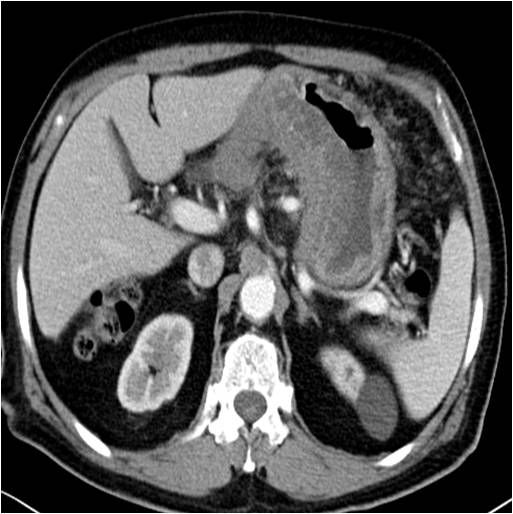
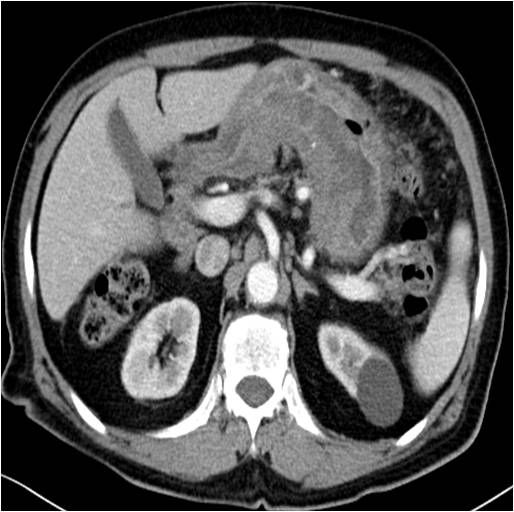
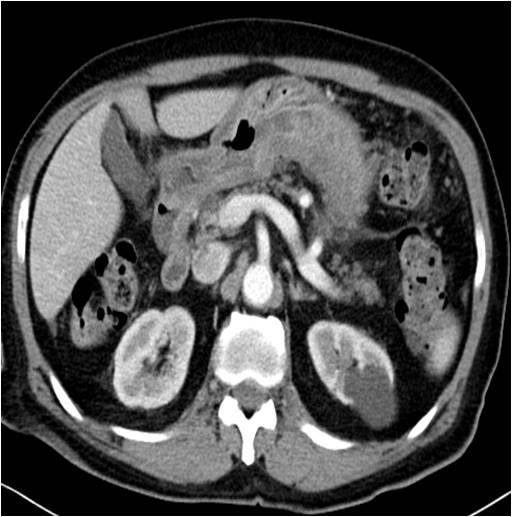
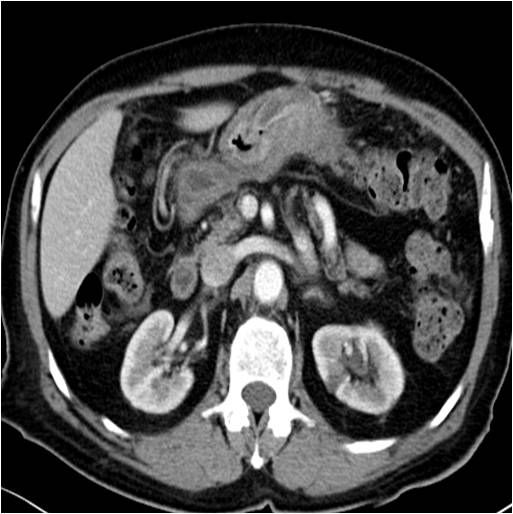
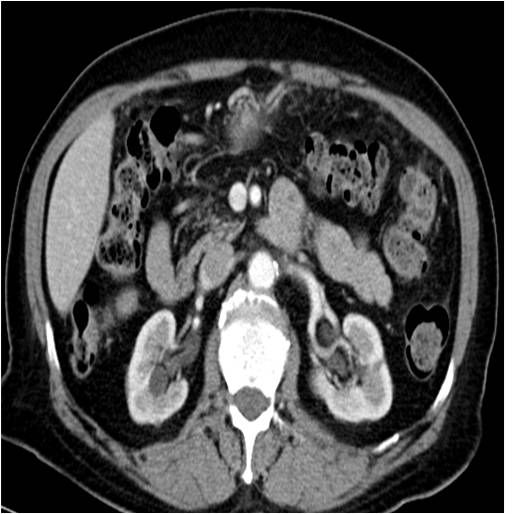
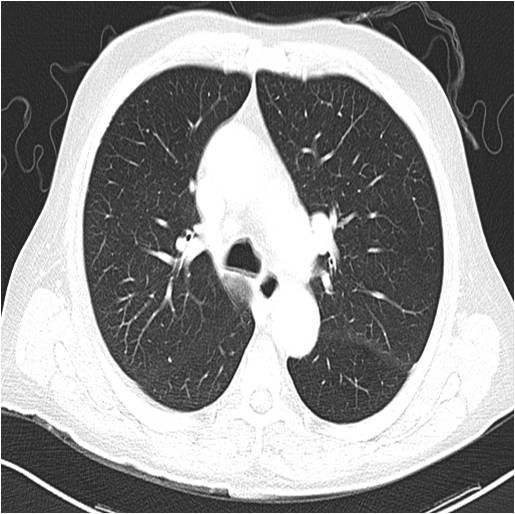
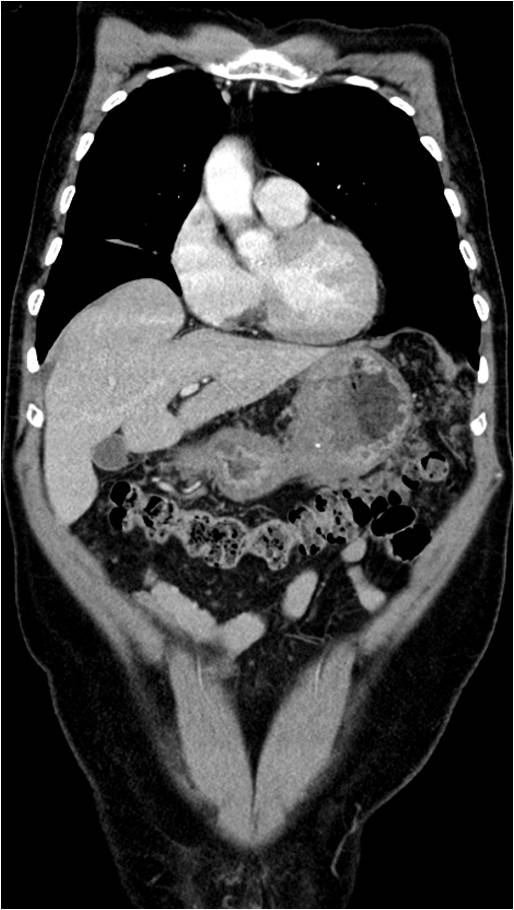
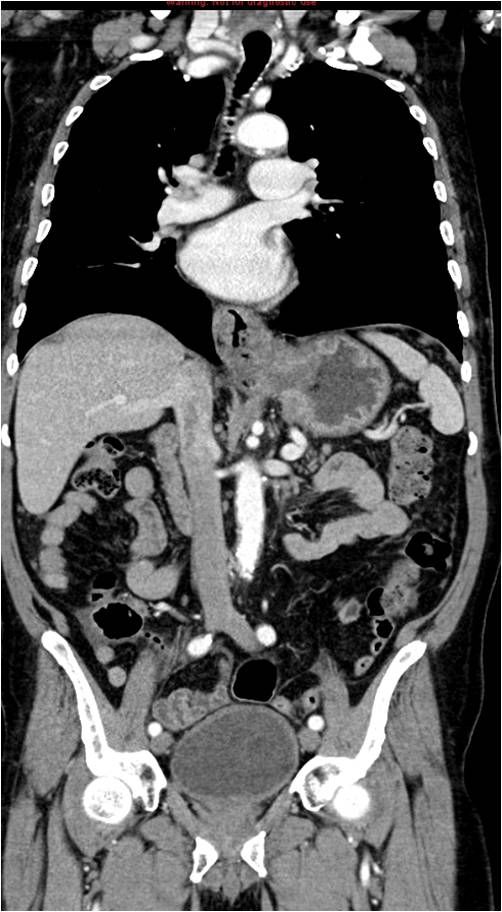

Findings:
Large stomach mass found with extension to the gastroesophageal junction/lower esophagus with evidence of peritoneal carcinomatosis. No metastatic disease seen in the liver or lungs.
Pathology:
Gastric biopsy : Mucinous adenocarcinoma grade2/3
Peritoneal biopsy: Metastatic mucinous adenocarcinoma
Gastric cancer, commonly referred to as stomach cancer, can develop in any part of the stomach and may spread throughout the stomach and to other organs; particularly the esophagus, lungs, lymph nodes, and the liver. Stomach cancer causes about 800,000 deaths worldwide per year.
Signs and symptoms:
Stomach cancer is often asymptomatic or causes only nonspecific symptoms in its early stages. By the time symptoms occur, the cancer has often reached an advanced stage, one of the main reasons for its poor prognosis.
Stomach cancer can cause the following signs and symptoms:
Stage 1 (Early) - Indigestion or a burning sensation (heartburn), loss of appetite, especially for meat, abdominal discomfort or irritation
Stage 2 (Middle) - Weakness and fatigue, bloating of the stomach, usually after meals
Stage 3 (Late) - Abdominal pain in the upper abdomen; nausea and occasional vomiting; diarrhea or constipation; weight loss; bleeding (vomiting blood or having blood in the stool) which will appear as black and can lead to anemia; dysphagia (This feature suggests a tumor in the cardia or extension of the gastric tumor in to the esophagus.)
Diagnosis:
To find the cause of symptoms, the doctor asks about the patient's medical history, does a physical exam, and may order laboratory studies. The patient may also have one or all of the following exams:
Gastroscopic exam is the diagnostic method of choice. This involves insertion of a fiber optic camera into the stomach to visualize it.
Upper GI series (may be called barium roentgenogram)
Computed tomography or CT scanning of the abdomen may reveal gastric cancer, but is more useful to determine invasion into adjacent tissues, or the presence of spread to local lymph nodes.
Discussion:
Mucinous gastric carcinoma has been termed mucoid, colloid, or gelatinous carcinoma . It is a rare subtype of gastric carcinoma that represents approximately 3 percent to 5 percent of all gastric epithelial cancers. Previously, however, there was no criterion for classifying the mucin-producing form of this tumor, and no distinction between those with intracellular mucin and those with extracellular mucin was made. The World Health Organization classifies gastric carcinoma into four types-(a) papillary, (b) tubular, (c) mucinous, and (d) signet ring cell - and defines mucinous gastric carcinoma as “an adenocarcinoma in which a substantial amount of extracellular mucin (more than 50 percent of the tumor) is retained within the tumor.
Both primary and metastatic gastrointestinal neoplasms may calcify. Mucinous adenocarcinomas of the stomach and colon can demonstrate a sand-like calcific pattern. Larger more discrete focal areas of calcification occasionally can be seen within leiomyomas of the esophagus or stomach, similar in appearance to the more common leiomyomas of the uterus. Clusters of phlebolithic calcifications may indicate a hemangiomatous lesion within the GI tract. Pancreatic cystadenomas or cystadenocarcinomas can have a characteristic sunburst calcified pattern. Neoplastic calcification within the liver is most commonly from metastatic disease and should prompt a search for a similar calcific pattern elsewhere within the abdomen indicating the primary tumor.
The type of degenerative calcification exemplified by this case should not be confused with psammomatous calcification which is characteristic for either the primary or secondary papillary serous cystadenocarcinomas of the ovary. Psammomatous calcifications are 5 to 100 microns in diameter and present radiographically as hazy cloud-like areas of calcification rather than the more focal sand-like calcification demonstrated in this case.
The differential diagnosis of organ calcifications in the left upper quadrant relies on recognition of the organ involved and distinguishing a sunburst, phlebolithic, or coarse calcified pattern.
Sushila Ladumor, MD, FRCR, Consultant Radiologist with Multi-modality Imaging experience, working in Medical Imaging Department, King Abdulaziz Medical City, Riyadh, Saudi Arabia.
References:
Diagnosis of Gastric Cancer with MDCT Using the Water-Filling Method and Multiplanar Reconstruction: CT-Histologic CorrelationAm. J. Roentgenol. November 1, 2005 185:1152-1158
Scirrhous Gastric Carcinoma: Endoscopy versus Upper Gastrointestinal RadiographyRadiology May 1, 2004 231:421-426
http://rad.usuhs.edu/medpix/new_topic.html?mode=single&recnum=1592&quiz=#pic
Could AI-Powered Abbreviated MRI Reinvent Detection for Structural Abnormalities of the Knee?
April 24th 2025Employing deep learning image reconstruction, parallel imaging and multi-slice acceleration in a sub-five-minute 3T knee MRI, researchers noted 100 percent sensitivity and 99 percent specificity for anterior cruciate ligament (ACL) tears.
The Reading Room Podcast: Current Perspectives on the Updated Appropriate Use Criteria for Brain PET
March 18th 2025In a new podcast, Satoshi Minoshima, M.D., Ph.D., and James Williams, Ph.D., share their insights on the recently updated appropriate use criteria for amyloid PET and tau PET in patients with mild cognitive impairment.